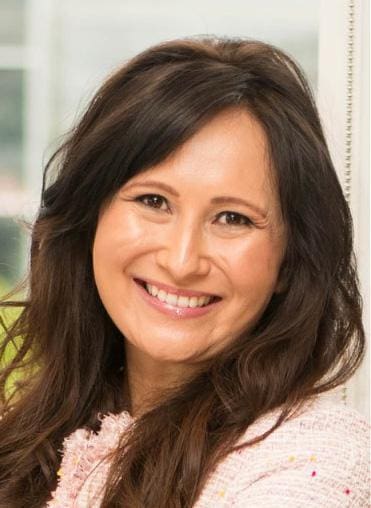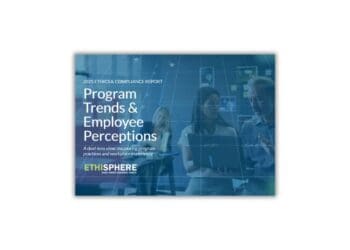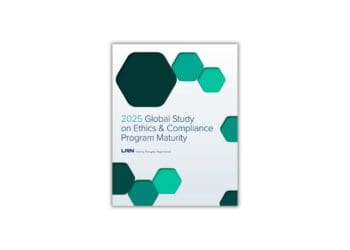CCI columnist Mary Shirley speaks from experience. Or, rather, about experience, a relatively new concept in the corporate world that’s most commonly applied to ensuring a seamless experience for customers. But as Mary’s interview with Maggie Chung Hill reveals, experience teams can look inward, too.
Many people perceive ethics and compliance as a sales or marketing function. It’s our job to persuade, influence and garner buy-in for our intangible but essential product — everyone playing a part in fostering a culture of integrity. In many ways, that’s right, but even more at our core, I consider us to be a customer-centric function. We can only operate and serve effectively when we keep our customer (in this case, internal business colleagues) front of mind and be in tune with what they need, oftentimes before they even realize they need it.
How could we better bolster our compliance and ethics offering in that regard and develop more customer-centric programs? In part, by focusing on experience.
The first time I came across an experience department was at Fresenius Medical Care. I was fascinated at the concept of a department expressly implemented to focus not just on customer (in that case, often patients) experience but also internally for staff.
During the pandemic I had the pleasure of getting to know and work with one of my experience colleagues, Maggie Chung Hill, more closely, as we were both members of the company AAPI employee resource group leadership team.
I adore Maggie for her boundless energy and hard work, and she’s the perfect person to talk to about how experience and compliance can combine. (Our interview is lightly edited for readability.)
Mary Shirley: What does an experience function cover or focus on, and for how long has the discipline been around?
Maggie Chung Hill: The experience function is really a wide field. It can focus on any group of stakeholders for an organization, whether it is customers, vendors or employees. It can also focus on any aspect of the experience from beginning to end. Many people confuse customer experience (CX) with customer service, but it’s more than that. Yes, customer service is an aspect of customer experience, but it’s much more broad and encompasses any process and teams that support our customers, vendors or employees.
Essentially, the experience team works cross-functionally to measure, understand, fix and optimize any part of the customer/vendor/employee journey to ensure it’s as smooth, easy and efficient as it can be. Anything that can positively or negatively shape the reputation, brand perception and service performance of an organization falls under the scope of the experience function.
Although the concepts of surveys, customer satisfaction and customer management have been around for quite some time, the CX function has been around only since the mid-2000s, when the internet became a standard method for communication and conducting business transactions. The internet allowed businesses to be able to gather customer feedback digitally in real-time at a mass scale [while tying] the feedback to a specific customer and/or transaction. Once actionable feedback started coming in, the CX function was created to specifically measure, track and improve business policies or processes based on the feedback coming in. I’ve been a CX practitioner since 2008 when I was hired to help build the global customer experience function at Thermo Fisher Scientific. 2023 marks my 15th year in the CX field!
MS: Well done on that milestone! It sounds like those of us who pore over our employee engagement survey results and issue culture of integrity surveys are well on the right track for being experience-minded. What types of people are best-suited to joining experience teams and what types of skills are required for success?
MCH: Because the companies that excel in customer experience tend to have cross-functional involvement, a variety of personalities and skill sets can thrive in it. I would say those who really stand out in the function are people-oriented, helpful problem solvers, data-driven, action-oriented and optimistic strategists.
We’re visionaries: We never seem to be satisfied with the status quo. We’re always trying to pitch the next big idea to make things better, or tell a persuasive story of what the dream state can be to anyone who will listen, from those in the executive suite to the front-line employees who are interfacing 1:1 with our stakeholders. Someone told me recently that CX people are very likable and happy people: I won’t argue with that!
MS: That sounds a lot like our continuous monitoring and ongoing improvement element in compliance programs. Our stakeholders may not see us this way, but in ethics and compliance, we often see our role as encompassing sales and marketing. We have to get buy-in in order to get our initiatives out there impactfully and properly. Many of us also consider ourselves to be a customer service function, serving all of our internal customers in the business. Based on experience principles, what are your suggestions for what we need to think about to improve the customer service experience we provide?
MCH: This is a great question. With many of the experience initiatives I’ve rolled out over the years, I’ve come to really value my colleagues in ethics and compliance who see themselves as collaborative business partners. So, rather than say, “Absolutely not, you can’t do that, Maggie,” I’d love to be told what my limitations and boundaries are, how risks can be mitigated and what could be viable if I’m open to suggestions or modifications to my plans so that it would be within ethics and compliance standards. I always value my business partners who can keep me out of trouble yet still give me the OK to proceed with a project if I am able to incorporate their recommendations rather than have to go back to the drawing board. With a strong sense of partnership and collaboration, win-win solutions are definitely possible.
MS: Thank you for appreciating the compliance function. We really do our absolute best to be the Department of Know, rather than the Department of No. What is an easy, actionable tip that we could start implementing tomorrow to be more customer-centric?
MCH: I’d love a one-pager of things that we have to think about when seeking approvals from the ethics and compliance team so that I can proactively be thinking about guardrails as we’re scoping out our initiatives ahead of time.
Also, sometimes I get confused on when I need to go to legal, privacy or compliance to gather permissions for our projects. In many cases, I might need to go to all three teams. If there was a way to streamline or simplify the process to gather approvals quickly from all the necessary stakeholders, it would be a big help.
New OIG Guidance: Let Compliance Officers Stay in Their Lane
HHS publishes nonbinding recommendations for healthcare & life sciences compliance programs
Read moreDetailsMS: What’s a common pitfall people make where they think they are best serving their customer but it actually does more harm than good?
MCH: Less so in healthcare but in the retail industry, it’s common to issue a coupon or refund to address customer complaints rather than trying to figure out the root cause of a systemic issue and doing the hard work of figuring out the problems and then solving the issue holistically.
MS: That’s a great one, thanks for sharing that. My understanding is that to be successful in experience, you need to be a good listener and gather feedback from your stakeholders. What are your preferred ways of collecting feedback? Are there any considerations to be conscious of when gathering feedback?
MCH: I believe that feedback is a gift, and it’s all around us. Throughout my career, I’ve gathered CX data (both qualitative and quantitative) from a variety of sources, such as surveys, interviews, panels, focus groups, customer service call recordings, website usage data, ERP/CRM data, social media conversations, online agent chat logs, emails, tech support tickets, training records, online reviews and sales/transaction data. It’s when we combine multiple datasets of feedback together that we can really form a clearer and deeper understanding of what our stakeholders have experienced, and/or whether we’ve met their expectations of a good experience.
Any feedback is valuable but to drive enterprise-wide action/change, it’s important to ensure your data is statistically significant. For example, if you want to be confident in saying a certain segment of your customer base feels a particular way about an aspect of the business and that change is needed, interviewing 1:1 a handful of them will not give you that confidence but sending out a survey in which thousands of customers stating similar feedback would. Interviews give you depth, but surveys give you breadth.
MS: Thanks so much for sharing all of those data sources. I love focus groups for when you’ve got a survey result that you don’t really understand or want to dig deeper into it. Focus groups are a great way to facilitate that missing information. Your response really got me thinking about how I often view Compliance data analytics in silos, but there is probably scope to interweave findings and look more holistically at data, so thank you for triggering that new thought for looking at data. What’s your best tip for being a good listener and gathering not just critical information that is provided but for listening out for what is not being said?
MCH: For surveys and any dialogues that can happen with stakeholders during interviews or focus groups, I always encourage asking an open-ended question of “What can we improve?” or “Is there anything else you’d like to share with us?” These open-ended questions typically allow top-of-mind topics from the POV of the stakeholders to bubble up to the surface.














